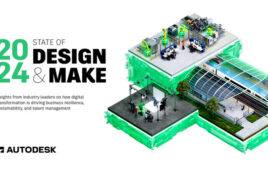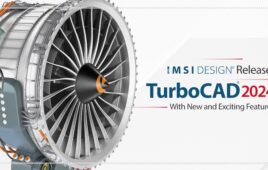Lohr Industrie designs and manufactures transportation systems for moving goods and people. Lohr engineers use NX software throughout the organization to perform linear, static, modal, dynamic response, thermal, flow, and buckling analyses.

The Translohr is a new generation of light-rail urban tramway. These systems are in service in France, Italy, and China. This train uses a single rail for steering the vehicle while traction is delivered through tires instead of rail. As a result, the Translohr requires less infrastructure than other railway systems.
Seam welds are an important part of the manufacturing process. Numerous factors affect the cost of the assembly process, including the number of welds, seam weld lengths, use of intermittent welds, and weld throat sizes. These factors also impact how the structure behaves dynamically and its affect on fatigue life. As a result simulation plays an important role in helping balance these requirements while maximizing performance.
The company’s vehicle structures are mainly made of sheets and extruded members and therefore lend themselves to the use of shell elements. The first step in the model preparation consists of generating the mid-surface. Engineers use the NX mid-surfacing capability for this process. They also developed another approach by using shell elements to represent the weld itself. The method is applicable for both static and fatigue analyses. For static strength assessment of fillet welds, an equivalent stress is computed at the mid-point of the weld throat. For fatigue, analyses are performed at weld toe and through the throat locations. Last, the weld shell element and the sheet mid-surfaces are connected using glue connections.

Number of welds, seam weld lengths, use of intermittent weld, and weld throat sizes affect assembly process costs.
The company validated this approach using tensile load specimens and comparisons against a fine solid mesh. In one test case, the Lohr model was composed of 1,025 degrees of freedom as compared to more than 500,000 degrees of freedom for the solid model. The coarse model results compared favorably with the fine solid model mesh results, giving the team confidence to move forward. The modeling method can be extended to partially penetrated fillet welds, overlap joints, and groove joints.
While there are advantages to having a smaller finite element (FE) model, this method does require manual steps to make the weld imprints on the sheet bodies, sub-divide the faces, and make the connections between weld and sheet elements. This would normally require a time-consuming model preparation process.
To reduce FE model preparation, Lohr engineers automated the weld modeling process. First, they used the NX Weld Assistant tool to define the weld geometry. Then, they developed a suite of C++ programs that leverage the NX Open application programming interface to automate various steps through a custom user interface in the NX environment. The interface guides them through various steps in the automated process. These include a CAD body connection to make the imprints and assign attributes to the imprint faces; an idealization step creates mid-surfaces; transferring CAD connections to the mid-surface; meshing using NX Advanced Simulation; and a final program to create the 1D edge-to-edge mesh connection. This automated process is used by all Lohr CAE analysts.
Analysis teams need to review weld location and evaluate the impact on overall strength and durability. At the same time, Lohr process engineers may wish to review the weld locations to determine if a robot can reach the weld area easily. In addition, process engineers might work with the CAE analysts to discuss post-weld treatment to improve joint quality.

Lohr CAE analyst said, “we spent about 75% of simulation time in model preparation. Using NX’s automated tools, we reduced about 60% of that process.”
To enable this collaboration, the company relies on Teamcenter software to share its 3D models and data. Teamcenter workflows are used to orchestrate design reviews. This enables multiple departments to review and approve or reject designs. According to Didier Turlier, Lohr manager of mechanical simulation and structural analysis, “In the future, we will likely use Teamcenter to share stress analysis results with the designers and the people who are working in manufacturing.”
Francois Weill, Lohr manager of CAD, CAM, and product lifecycle management, “The advantage we get from Teamcenter is that everyone sees the same information at the same time; and then, by avoiding the use of paper, we accelerate the process. Using Siemens’ technology, we have speeded up workflows through real-time design and approval. We realized a 60% time savings in model preparation. Our quality has improved both in terms of process and product. Most notably, the use of NX and Teamcenter has enabled us to successfully enter a new target market.”
Siemens
www.siemens.com
::Design World::
Filed Under: ENGINEERING SOFTWARE, TEST & MEASUREMENT





Tell Us What You Think!